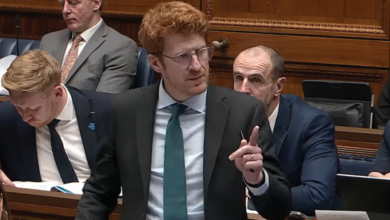Consensus emerges on Executive reform
 Slow progress is being made on reducing the number of departments but parties agree on a basic structure for the way forward.
Slow progress is being made on reducing the number of departments but parties agree on a basic structure for the way forward.
Back in 2006, the St Andrews Agreement promised a fresh look at Stormont’s structures with a view to agreeing changes by 2015. The Assembly and Executive Review Committee (AERC) was set up to scrutinise proposals but little progress has been made to date.
Within the Executive, the 2008-2011 Programme for Government pledged to review the number of departments by 2011 and its successor said that any changes to the post-2015 structures of government would be agreed in 2012. Both deadlines have been missed.
AERC’s most recent report on the subject was published in November 2012. The Northern Ireland Bill will implement any changes agreed between the main parties.
The committee acknowledges that this may be the only opportunity to take reforms forward and its report did find a consensus between the parties. It would allow for this basic structure:
• stand-alone health, education and justice departments;
• a department of the economy;
• a department of agriculture, environment and rural development;
• a department for housing, regeneration, local government and welfare; and
• a revised or reformed OFMDFM.
The number of preferred departments varies between the parties: the DUP suggests six to eight, Alliance and the UUP eight, and the SDLP 11. The SDLP said that cutting the number of departments was a side issue as the number of civil servants (28,000) would probably remain the same.
Sinn Féin is “not opposed” to a reduction in the number of departments as long as this did not affect the nationalist-unionist balance in the Executive.
Peter Robinson and Martin McGuinness announced the abolition of the Department for Employment and Learning in January 2012 but this was delayed in July 2012 until a final agreement on the future of all departments was made.
AERC has also considered d’Hondt and the potential for an opposition in the Assembly.
Queen’s professor of politics Yvonne Galligan said that the d’Hondt mechanism had served Northern Ireland well for three reasons: transparency, inclusiveness and proportionality. She believed that d’Hondt could continue to operate for Executive ministries alongside a formal opposition. Galligan also suggested that whips should have less influence in committees, to enable more open discussions to take place.
Her colleague, Rick Wilford, suggested that another formula (Sainte-Laguë) would be better for protecting the interests of smaller parties when forming an Executive.
Wilford added that a formal opposition “is complementary to a rigorous committee system” but also allowed voters the choice of an “alternative government-in-waiting”. Providing for an opposition was also a feature of “any self-respecting liberal democratic parliament” and weighted majority voting could protect minorities in the Assembly.
One of the most telling signs of the slow speed of reform is the absence of an efficiency review panel, to recommend changes to the First and deputy First Ministers. This was promised at St Andrews in 2006 and re-announced in 2009 but has still not been established.
When questioned on this by Alliance MLA Chris Lyttle last year, OFMDFM civil servant Tony Canavan said: “I cannot indicate when that may be appointed. It does not need to be appointed; it is not statutory.” Canavan added that the panel “has existed only as a paragraph in the St Andrews Agreement”. agendaNi asked OFMDFM to explain his comments but no reply was received.





